Carefully follow these tire changing warnings to help prevent personal injury or damage to your vehicle:
-
Always park on a firm, level surface as far from the edge of the roadway as possible before raising the vehicle.
-
Turn on the Hazard Warning Flashers.
-
Apply the parking brake firmly and set the transmission in PARK.
-
Block the wheel diagonally opposite the wheel to be raised.
-
Never start or run the engine with the vehicle on a jack.
-
Do not let anyone sit in the vehicle when it is on a jack.
-
Do not get under the vehicle when it is on a jack. If you need to get under a raised vehicle, take it to a service center where it can be raised on a lift.
-
Only use the jack in the positions indicated and for lifting this vehicle during a tire change.
-
If working on or near a roadway, be extremely careful of motor traffic.
-
To assure that spare tires, flat or inflated, are securely stowed, spares must be stowed with the valve stem facing the ground.
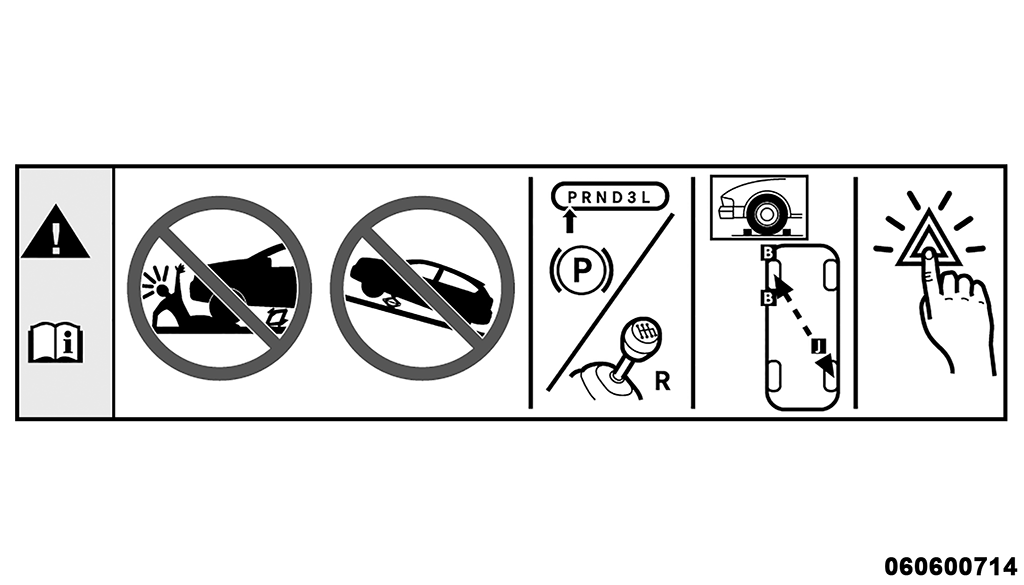
Jack Warning Label
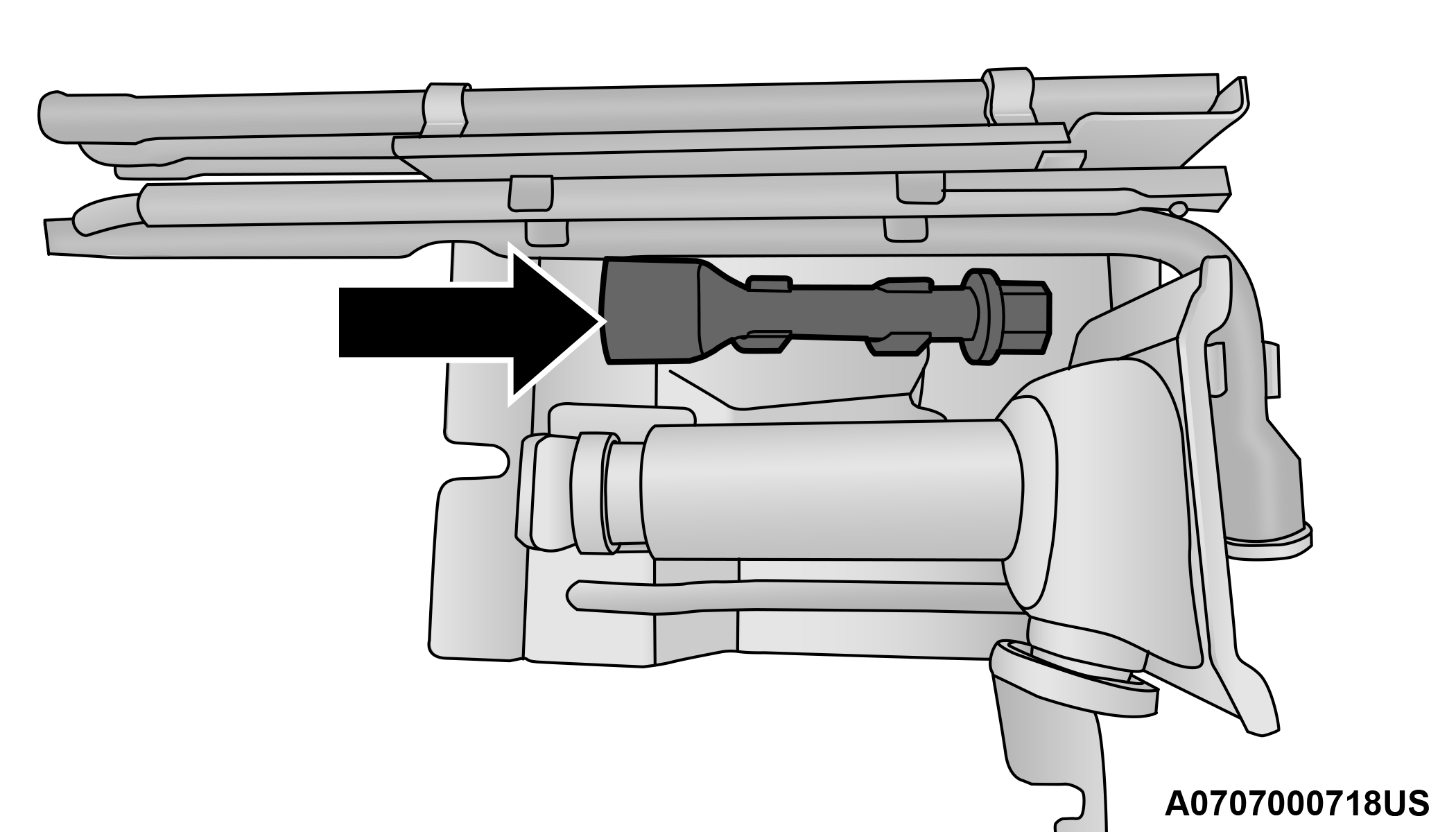
Lug Wrench Adapter Location
See the following steps for proper jacking and tire removal:
-
Remove the spare wheel, jack, and tools from storage.
-
Using the lug wrench, loosen, but do not remove, the wheel nuts by turning them counterclockwise one turn while the wheel is still on the ground. Changing a dually tire requires the lug wrench adapter.
Note:If your vehicle is equipped with hub caps/wheel covers they must be removed before raising the vehicle off the ground Hub Caps/Wheel Covers — If Equipped.
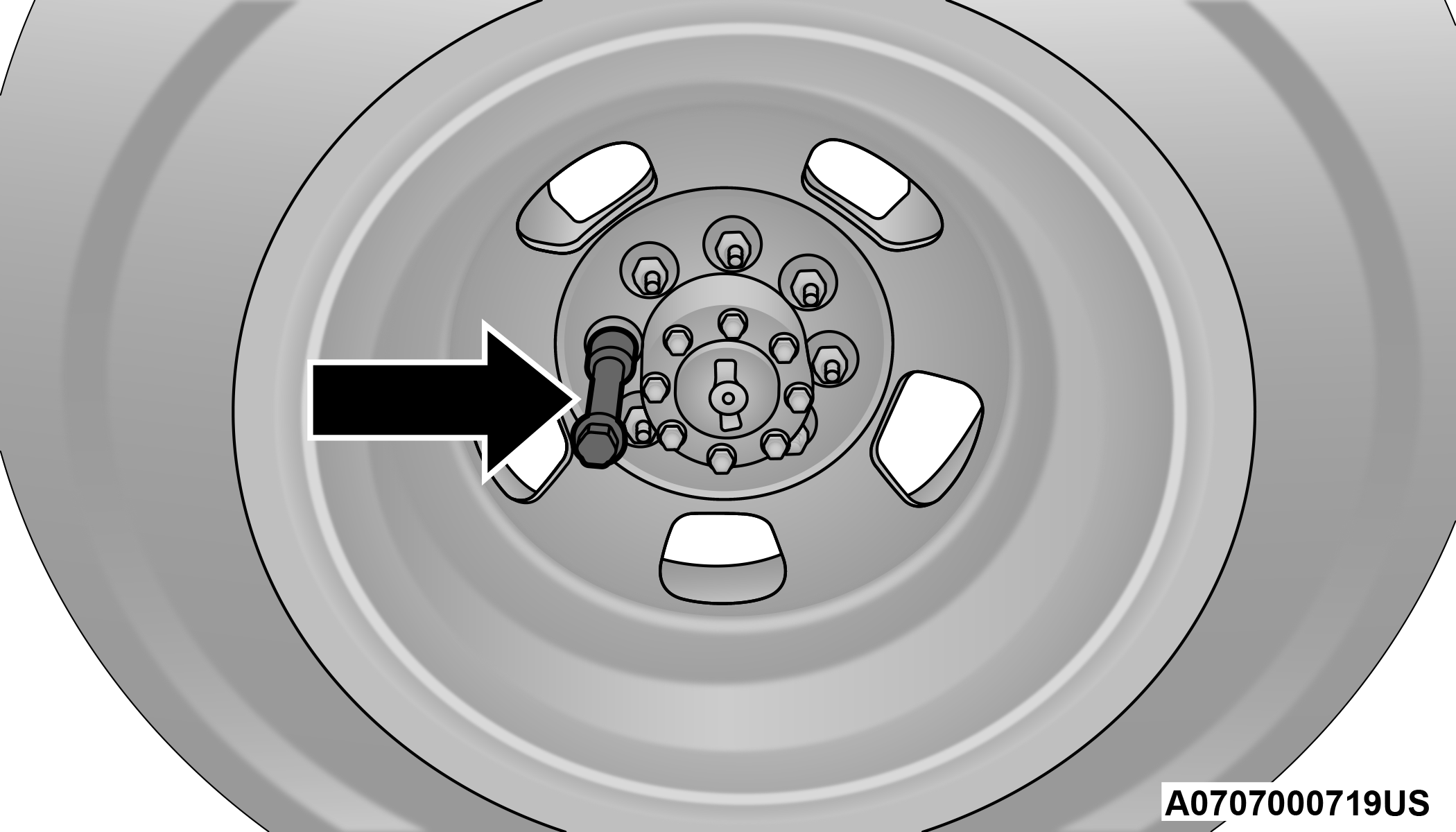
Lug Wrench Adapter
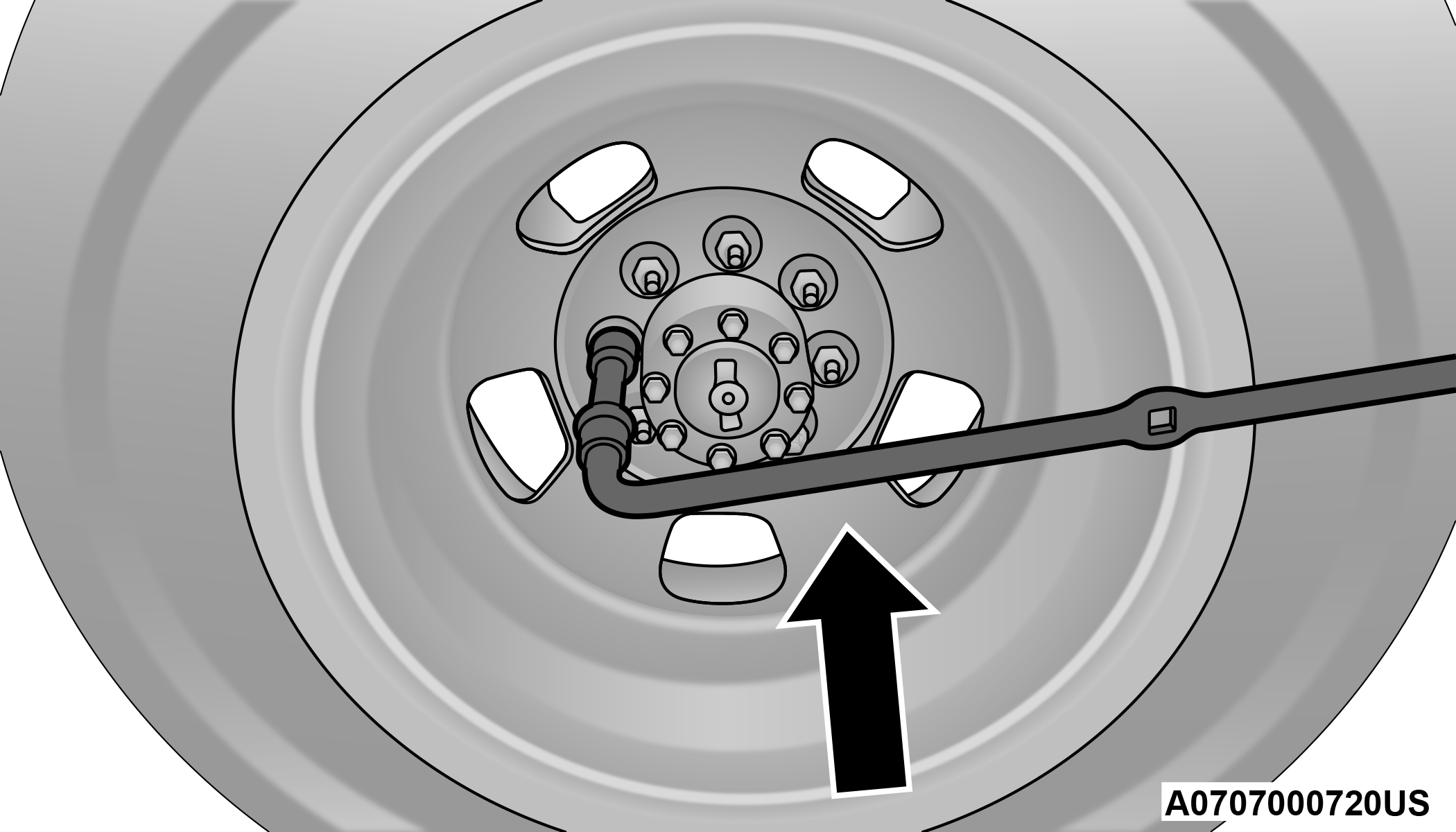
Lug Wrench Adapter And Wrench
-
Place the assembled jack and tools into the jacking position.
Note:Placement for the front and rear jacking locations are critical. Keep the jack and tools aligned while raising the vehicle to prevent tool damage. See the following images for proper jacking locations.
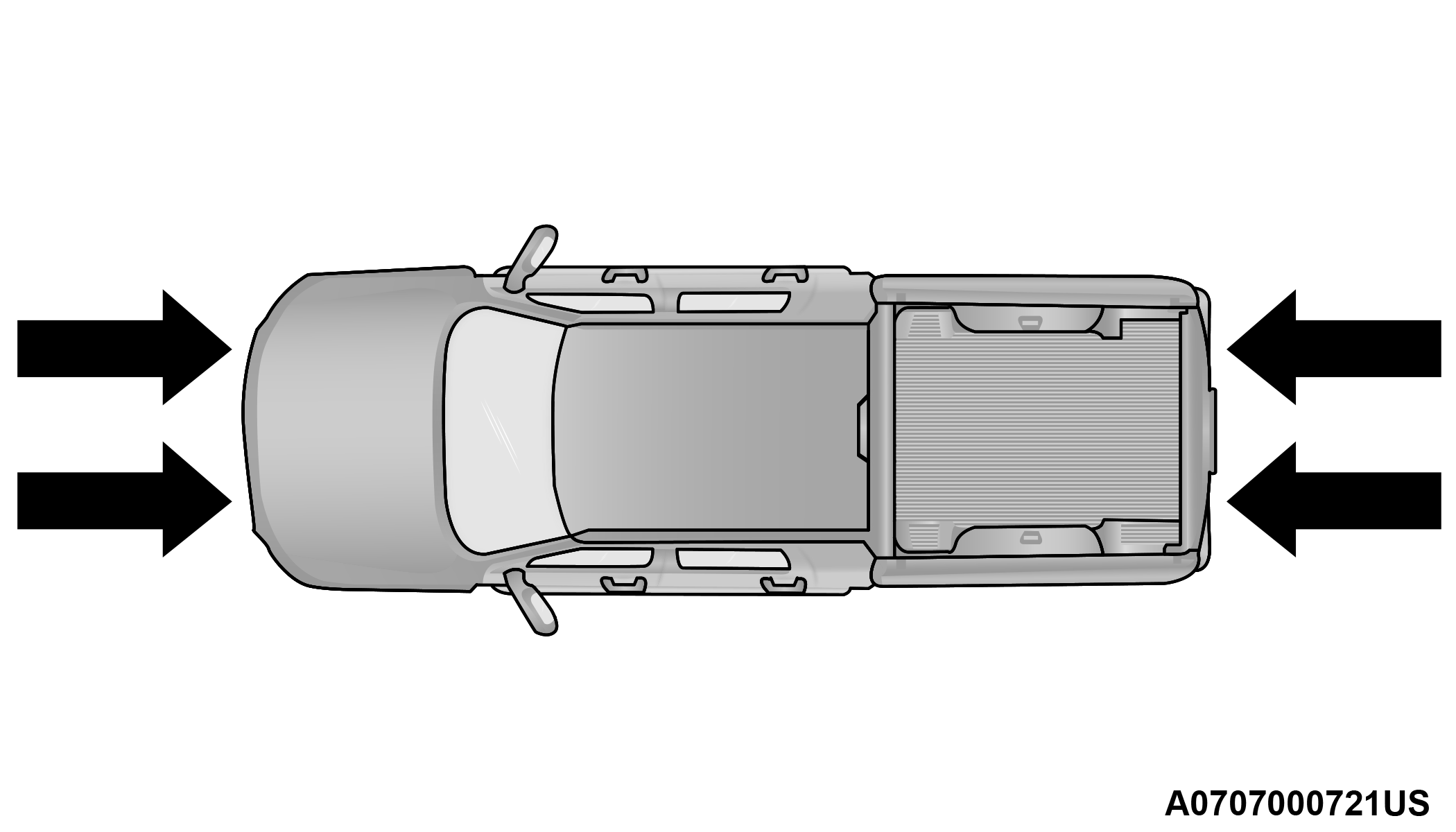
Jack / Extensions Placement
CAUTION!:Do not attempt to raise the vehicle by jacking on locations other than those indicated in the Jacking Instructions for this vehicle.
Front Jacking Location
When changing the front wheel, assemble the jack driver to the jack and connect the jack driver to the extension tubes. Place the jack under the axle as close to the tire as possible with the drive tubes extending to the front. Connect the extension tubes and lug wrench.
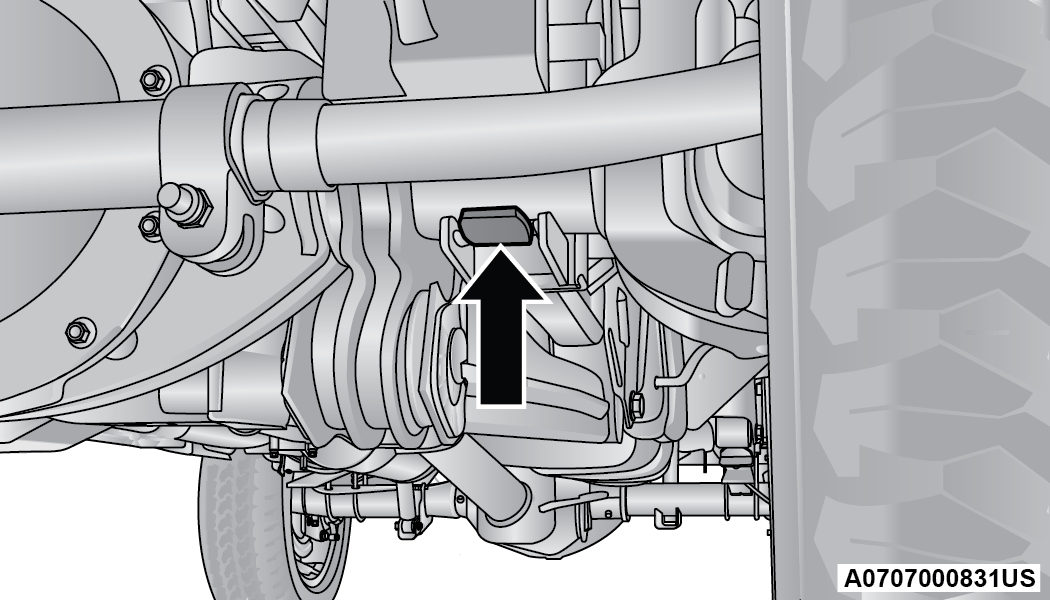
Front Lifting Point
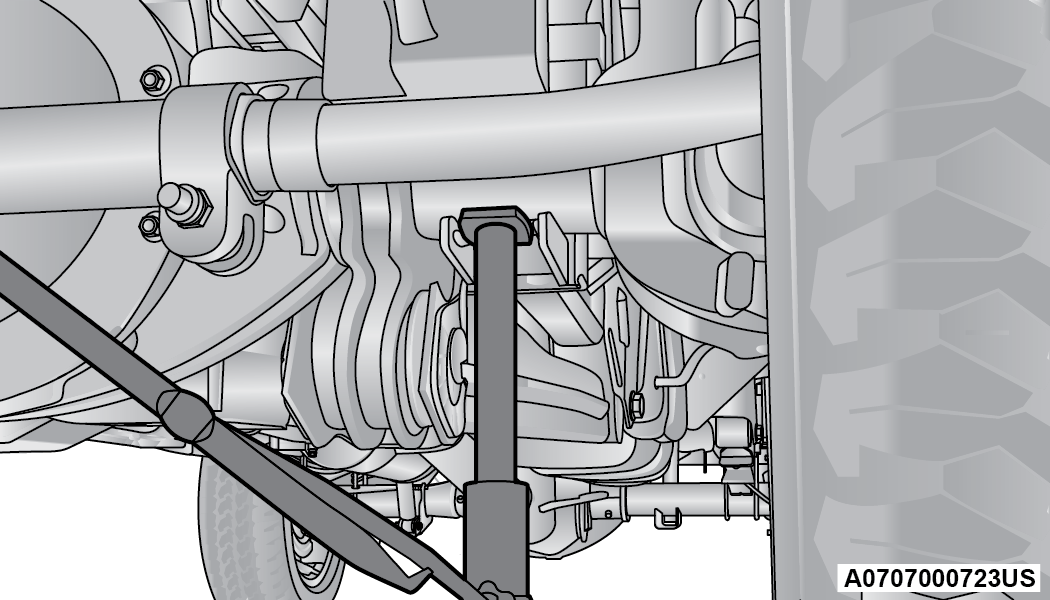
Front Jacking Location
Rear Jacking Location
When changing a rear wheel, assemble the jack driver to the jack and connect the jack driver to the extension tubes. Place the jack under the axle between the spring and the shock absorber with the extension tubes extending to the rear.
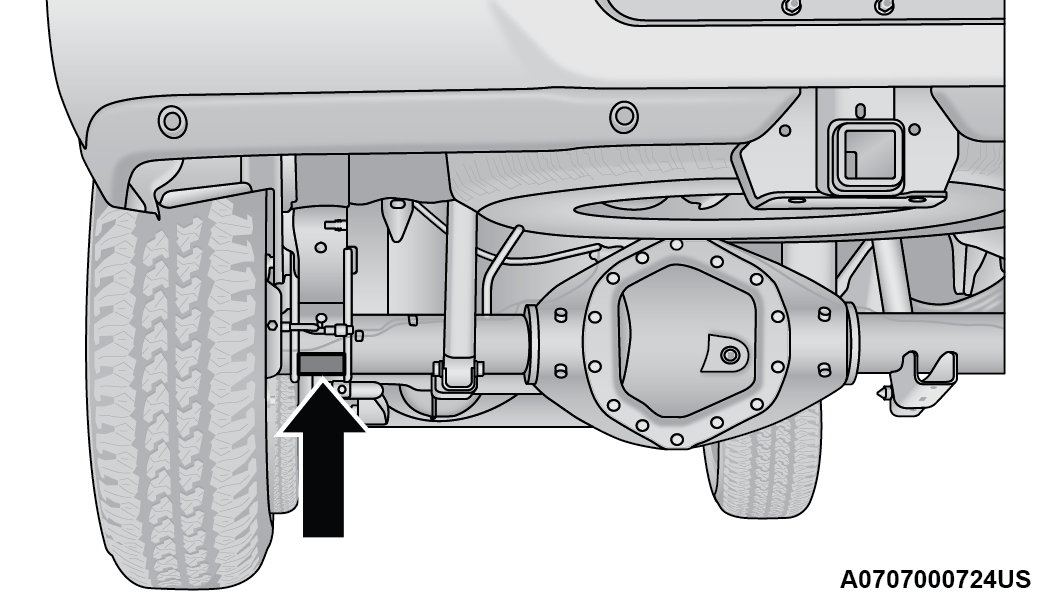
Rear Lifting Point
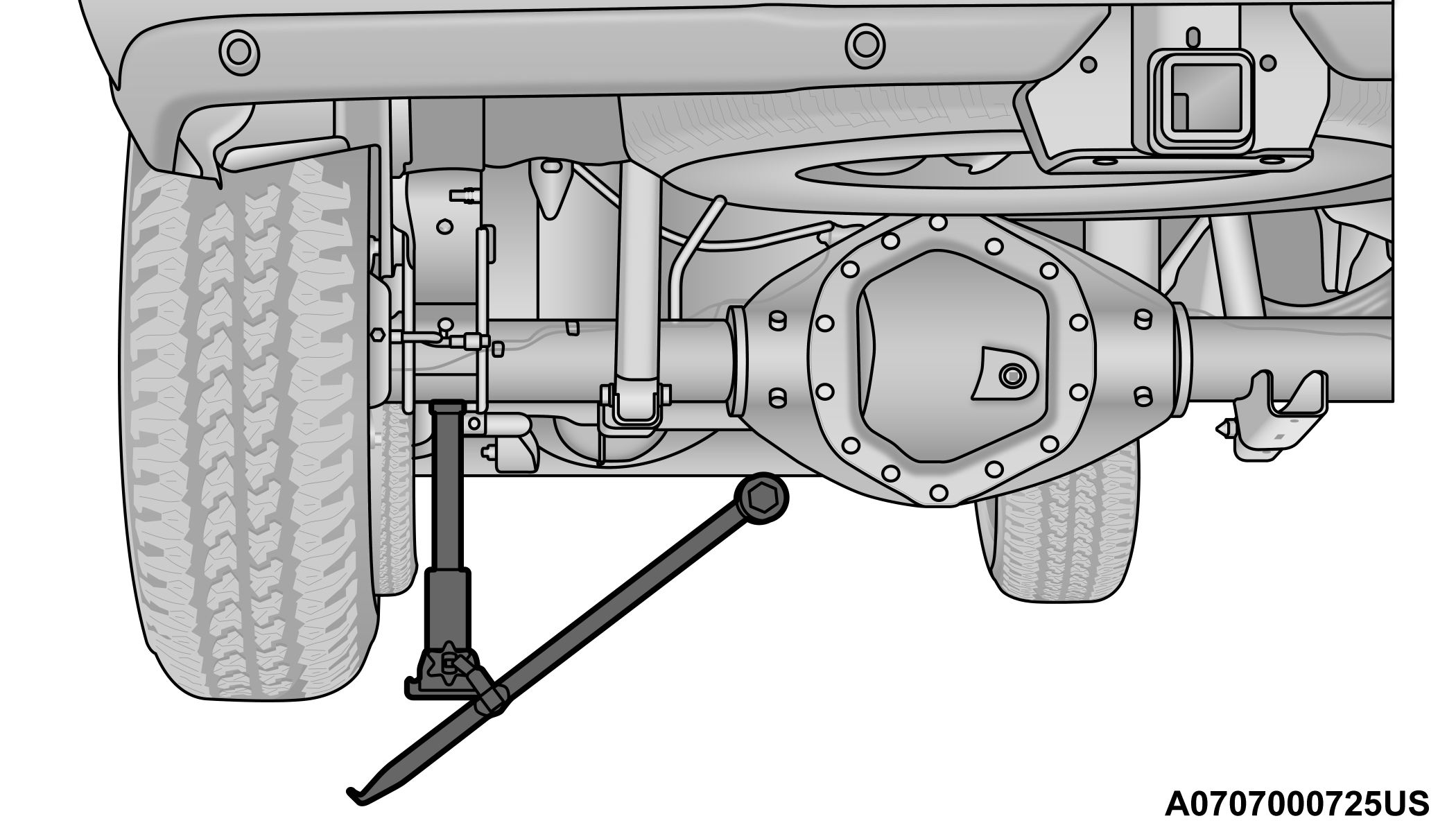
Rear Jacking Location
CAUTION!:Before raising the wheel off the ground, make sure that the jack will not damage surrounding truck parts and adjust the jack position as required.
-
Connect the extension tubes and lug wrench.
-
By rotating the lug wrench clockwise, raise the vehicle until the wheel just clears the surface.
Warning!:Raising the vehicle higher than necessary can make the vehicle less stable. It could slip off the jack and hurt someone near it. Raise the vehicle only enough to remove the tire.
-
Remove the lug nuts and pull the wheel off. On Single Rear Wheel (SRW) trucks, install the spare wheel and lug nuts with the cone shaped end of the wheel nuts toward the wheel. On 3500 Dual Rear Wheel (DRW) trucks, if the outer tire is being replaced then leave the inner wheel on the vehicle. If the inner wheel is being replaced remove the outer wheel and replace the inner wheel. The wheel nuts are a two-piece assembly with a flat face. Lightly tighten the lug nuts. To avoid the risk of forcing the vehicle off the jack, do not fully tighten the lug nuts until the vehicle has been lowered.
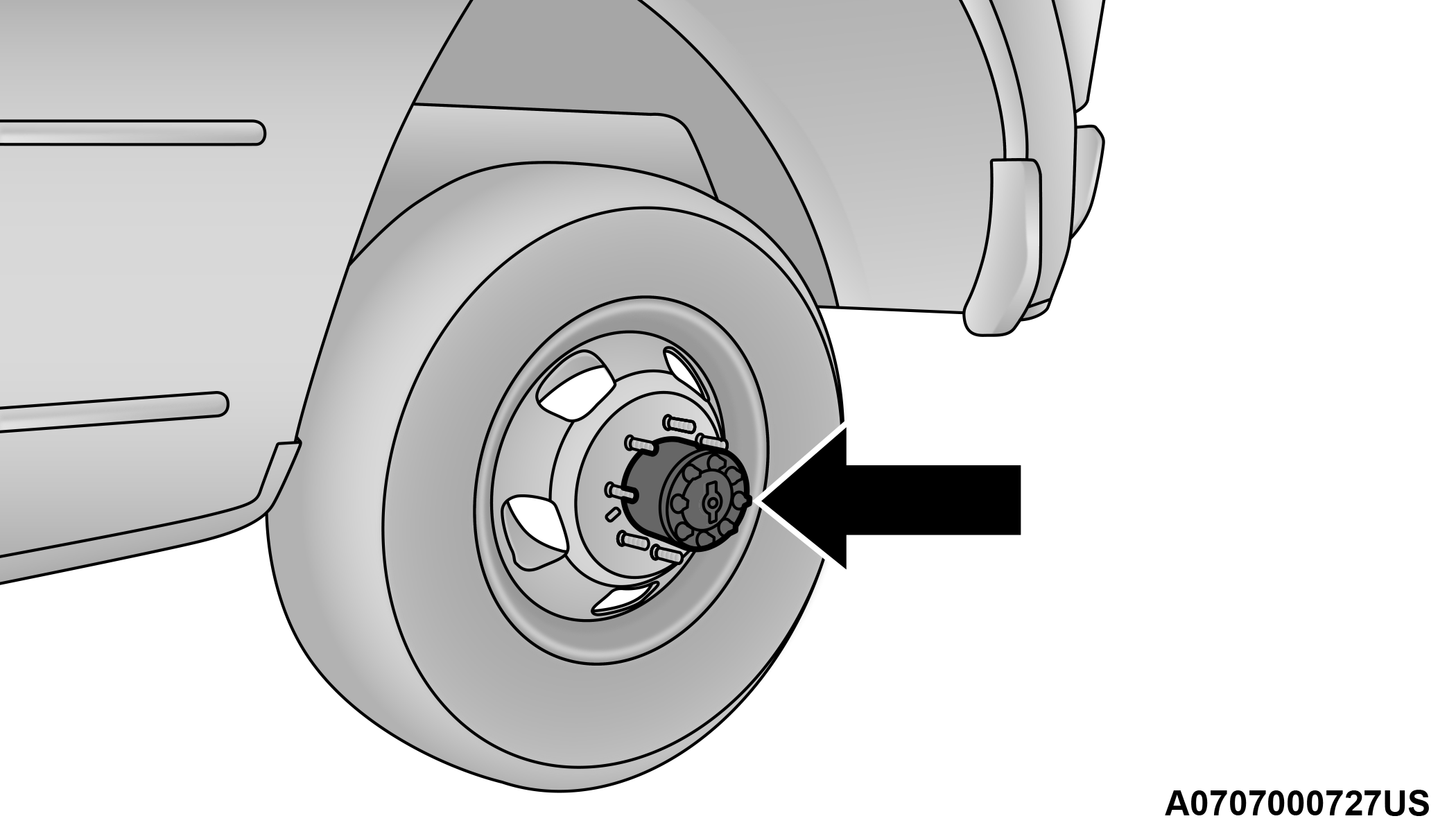
Rear Inner Wheel Proper Placement (Dual Rear Wheel Equipped)
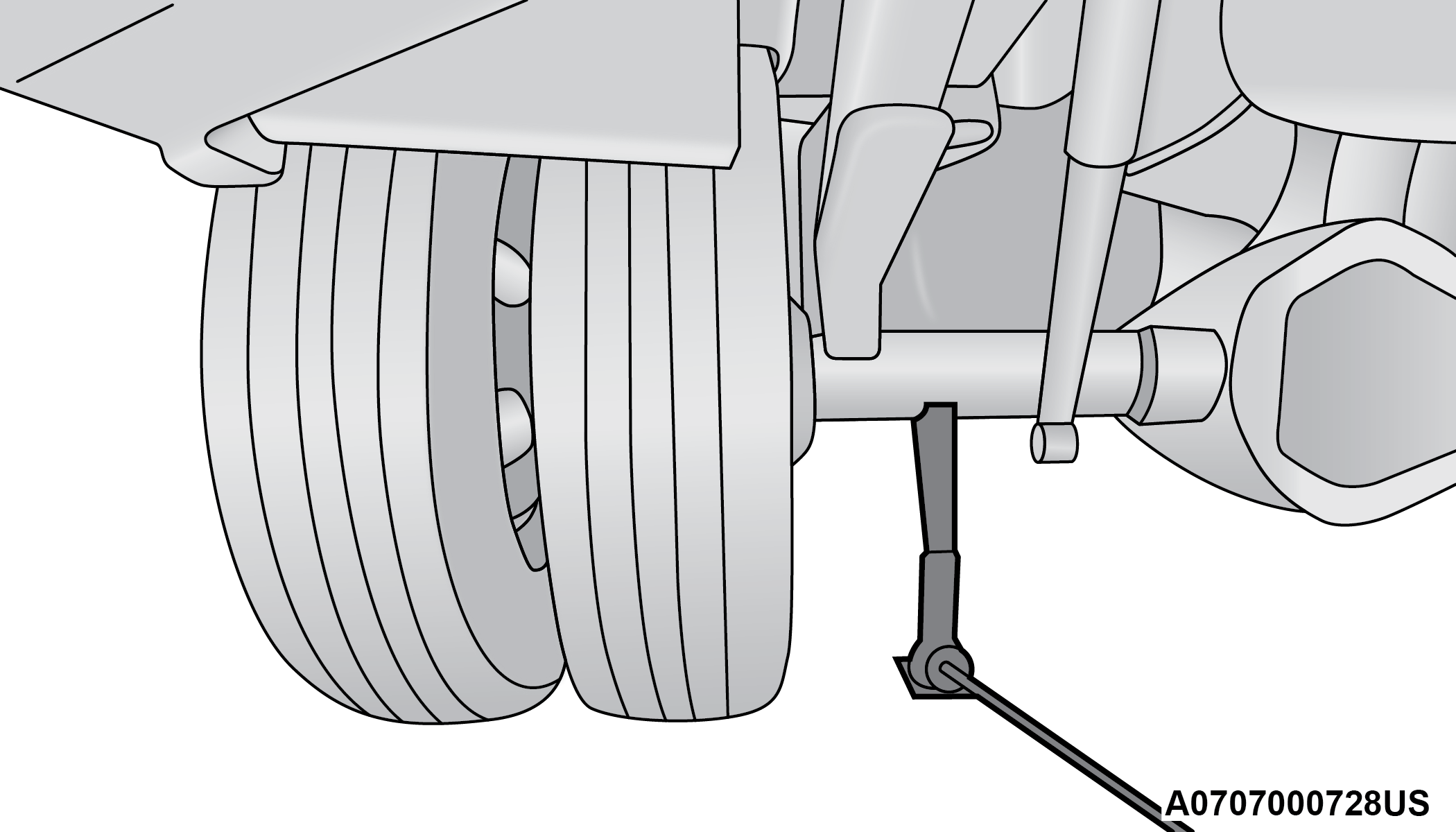
Dual Rear Wheel Jack Placement
-
Finish tightening the lug nuts. Push down on the lug wrench while at the end of the handle for increased leverage. Tighten the lug nuts in a star pattern until each nut has been tightened twice WHEEL AND TIRE TORQUE SPECIFICATIONS. If in doubt about the correct tightness, have them checked with a torque wrench by an authorized dealer or service station.
Warning!:A loose tire or jack thrown forward in a collision or hard stop, could endanger the occupants of the vehicle. Always stow the jack parts and the spare tire in the places provided.
-
Install the wheel center cap and remove the wheel blocks. Do not install chrome or aluminum wheel center caps on the spare wheel. This may result in cap damage.
-
Lower the jack to its fully closed position. Stow the replaced tire, jack, and tools as previously described.
Note:The bottle jack will not lower by turning the dial (thumbwheel) by hand, it may be necessary to use the jack driver in order to lower the jack.
-
Adjust the tire pressure when possible.
Do not oil wheel studs. For chrome wheels, do not substitute with chrome plated lug nuts.